let the objects speak
Chimú - Loin Cloth Fragment
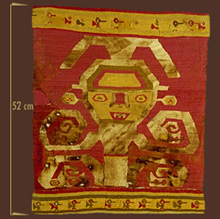
Mesoamerican and Andean cultures both buried their dead with large quantities of textiles. This Chimú textile, from Peru's north coast, dates to A.D. 1450-1550. It was part of a burial as evident from the characteristic black discolouration caused by human decomposition. A standardized Chimú frontal pose allows the mythical being depicted to display its elongated serpentine limbs, which end with the head of the Moon Animal. The projections from its head are likely representations of circular ear spools which are common among Chimú and other North Coast artifacts. These ear adornments, together with the crescent headdress are traits of human costume, which are combined with the animal-like limbs and teeth.
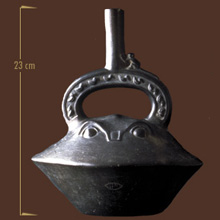
Who
During the Late Intermediate Period (A.D. 1000-1476), no single cultural group ruled the Andean region. The coastal Chimú Kingdom developed during this period of cultural diversification, and is characterized by highly sophisticated administrative principles, art, and architecture, many of which continued after the Inka subjugated the Chimú in A.D. 1476. Chimú ceramics have been found along the entire stretch of Peruvian coastline, even into Ecuador, spread widely by the Inka. This Chimú smoked blackware spouted vessel shows the strong relationship with the sea as the body of the vessel is in the form of a ray, and ducks are placed along the spout.
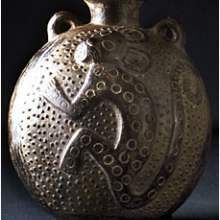
Chimú ceramics were traditionally mould-made, usually blackware and often decorated with simple relief designs, commonly of birds, mammals or fish. Blackware is the name given to pottery which is black in colour due to the way the clay was fired and not due to paints or slips. The process is called reduction firing, where the amount of oxygen in the firing is reduced, forcing the fire, which needs oxygen to live, to search for it elsewhere. The fire finds oxygen bound in the chemical compounds within the clay body itself. When this happens, there is a great transformation and the chemical formula of the clay is changed. This produces a different colour, changing, in the case of the Chimú pots, red clay to black pottery.
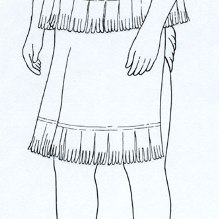
What
During this time period, we know that the Chimú were making very large loin cloths in this style. This object represents one of two panels from the front flap of a loincloth. The lower row of walking birds is not from this piece as the striping and bird order are different from the top. The band is from another Chimú piece of cloth and has been sewn on (perhaps by a collector or art dealer) to this piece.
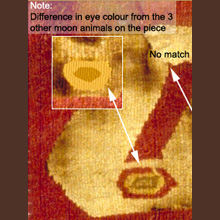
Close inspection also shows us that the Moon Animal head on the lower left, while the same style and structure, does not match up exactly. Before the object found its way to the museum, pieces from the more deteriorated other panel were used as patches for this panel to give the impression of a more complete textile, and the plain cloth section and ties were completely discarded.
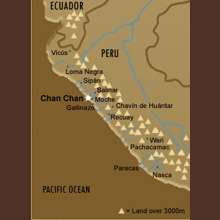
Where
The immense site of Chan Chan was the capital of the Chimú Kingdom. Its ruins are located on the north side of the Moche Valley only one kilometre from the Pacific Ocean, which explains the preoccupation with marine imagery on Chimú textiles and ceramics. Some Chimú people were fisherman or farmers, who resided outside of the city of Chan Chan. They relied heavily on the land and sea for their livelihood. Others - the nobility, administrators, crafts people, religious leaders, and builders - lived within the city.

The architecture of Chan Chan demonstrates that Chimú society was made up of several ranks, where place of residence and burial reflected social status, and where the rich and poor were often separated by immense adobe (mud-brick) walls.